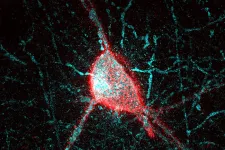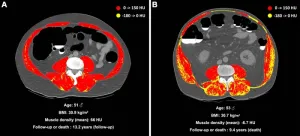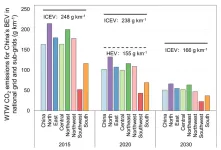(Press-News.org) How do our brains become capable of creating specific memories? In one of the first preclinical studies to examine memory development in youth, a research team at The Hospital for Sick Children (SickKids) may have identified a molecular cause for memory changes in early childhood.
Event-based memories, also known as episodic memories, are what people traditionally think of when they hear the word memory: a recollection tied to a specific context. For young children, however, memory is more general or “gist”-like, and these general recollections are typically not tied to a specific context.
In a study published in Science led by Drs. Paul Frankland and Sheena Josselyn, both Senior Scientists in the Neurosciences & Mental Health program at SickKids, the researchers pinpoint the molecular mechanisms underlying the change from gist-like to episodic memory in mice. The team notes that understanding this change, which generally occurs between four and six years old in children, may inform new insights in child development research and conditions which affect the brain, from autism spectrum disorder to concussion.
“Researchers have studied how episodic memory develops for decades, but thanks to the development of precise cellular interventions we were now able to examine this question at the molecular level for the very first time,” says Frankland, who also holds a Canada Research Chair in Cognitive Neurobiology.
Growth of perineuronal net may trigger change in memory
In adults, memory traces (also known as engrams) are made up of 10 to 20 per cent of neurons, but the overall size of these engrams is doubled in young children, with 20 to 40 percent of neurons making up an engram supporting a memory.
So why the change? The hippocampus, a part of the brain responsible for learning and memory, contains a variety of neurons including a type of inhibitory cell called a parvalbumin-expressing (PV) interneuron. These inhibitory cells constrain the size of the engram and enable memory specificity. The research team identified that as these interneurons mature, memory transitions from general to more specific and engrams are formed at the appropriate size.
Using viral gene transfer technology developed by Dr. Alexander Dityatev, head of the Molecular Neuroplasticity research group at the German Center for Neurodegenerative Diseases, the researchers decided to delve deeper and explore the reason for this change. They found that as a dense extracellular matrix, known as the perineuronal net, develops around these interneurons in the hippocampus, the interneurons mature, shifting the way our brain creates engrams and stores memories.
"Once we identified the perineuronal net as a key factor in interneuron maturation, we were able to accelerate the net’s development and create specific episodic, rather than general, memories in juvenile mice,” says Josselyn, who holds a Canada Research Chair in Circuit Basis of Memory.
Informing new insights into brain function and cognition
While the team was able to trigger this change in memory type by accelerating the development of the perineuronal net, they also note that the reasons for the age difference between gist-like and episodic memories should not be overlooked.
“When you think about what purpose memory serves, it makes sense that a child’s memory would function differently from an adult,” explains Adam Ramsaran, a PhD candidate in the Frankland Lab and first author on the study. “At three years old, you don’t need to remember the specifics. A gist-like memory helps children build a large knowledge base which can get more specific as they grow older and have more experiences.”
Building on these molecular discoveries, the research team sped up the growth of the perineuronal net by providing an enriched environment to allow the formation of specific memories, a finding which is helping to inform child development research underway at SickKids and the University of Toronto.
“Outside of memory development, we also found similar maturation-type mechanisms involved in different sensory systems of the brain,” says Frankland. “The same brain mechanism may be used by several different brain regions for several different purposes, which presents exciting new opportunities for research and collaboration.”
This study was funded by Brain Canada, the Canadian Institutes of Health Research (CIHR), University of Toronto, SickKids Research Institute, German Research Foundation, German Center for Neurodegenerative Diseases, National Institutes of Health (NIH), Natural Sciences and Engineering Research Council of Canada (NSERC), Ontario Graduate Scholarship program, Ontario Trillium Scholarship program and the Vector Institute.
END
Study first to examine how early memory changes as we age at a cellular level
2023-05-16
ELSE PRESS RELEASES FROM THIS DATE:
New paper introduces ethics framework for use of Generative AI in healthcare
2023-05-16
A new paper published by leading Australian AI ethicist Stefan Harrer PhD proposes for the first time a comprehensive ethical framework for the responsible use, design, and governance of Generative AI applications in healthcare and medicine.
The peer-reviewed study published in The Lancet’s eBioMedicine journal details how Large Language Models (LLMs) have the potential to fundamentally transform information management, education, and communication workflows in healthcare and medicine but equally remain one of the most dangerous and misunderstood types of AI.
“LLMs used to be boring and safe. They have become exciting ...
Accomplished molecular biologist to lead new group at MDI Biological Laboratory
2023-05-16
Halyna Shcherbata, Ph.D., will lead a new research group at MDI Biological Laboratory, in the Kathryn W. Davis Center for Regenerative Biology and Aging. Shcherbata's work has focused on regulatory and other roles of non-coding microRNA in gene expression and maintenance, and disorders such as muscular dystrophy and developmental delay. She is already developing new facilities for Drosophila melanogaster fruit flies on campus, returning an esteemed stand-in for human physiology to the Laboratory’s roster of animal models.
In her new lab on Maine's Mt. Desert ...
Muscle fat linked to higher mortality risk
2023-05-16
OAK BROOK, Ill. – Asymptomatic adults with a high accumulation of fat in their muscles, known as myosteatosis, are at an increased risk of major adverse events and death, according to a study published in Radiology, a journal of the Radiological Society of North America (RSNA).
One of the methods used by physicians to estimate body fat in patients is the body mass index (BMI). Since BMI is calculated using only a patient’s height and weight, it’s not an accurate reflection of body composition ...
ChatGPT passes radiology board exam
2023-05-16
OAK BROOK, Ill. – The latest version of ChatGPT passed a radiology board-style exam, highlighting the potential of large language models but also revealing limitations that hinder reliability, according to two new research studies published in Radiology, a journal of the Radiological Society of North America (RSNA).
ChatGPT is an artificial intelligence (AI) chatbot that uses a deep learning model to recognize patterns and relationships between words in its vast training data to generate human-like responses based on a prompt. But since there is no source of truth in its training data, the tool can generate responses that are factually ...
MD Anderson awarded over $5.7 million from Break Through Cancer to support AML research
2023-05-16
HOUSTON – The University of Texas MD Anderson Cancer Center was awarded more than $5.7 million in grants from Break Through Cancer to support collaborative research teams working to discover novel molecular targets to eradicate minimal residual disease in acute myeloid leukemia (AML) and to treat clonal hematopoiesis, a precursor to AML.
MD Anderson received $2.7 million to fund research for the Targeting Clonal Hematopoiesis to Prevent AML TeamLab and $3 million for the Eradicating Minimal Residual Disease in AML TeamLab. The projects expand upon work initiated within MD Anderson’s Myelodysplastic Syndromes and Acute Myeloid ...
Magnetic stimulation may improve the pain, nausea of diabetic gastroparesis
2023-05-16
AUGUSTA, Ga. (May 16, 2023) – Magnetic stimulation of a group of nerves key to how our gut and brain communicate may help correct the conversation that goes awry in painful, debilitating diabetic gastroparesis, researchers say.
Patients come to Amol Sharma, MD, because their stomachs constantly hurt, they are always nauseous and they can’t or won’t eat or drink. Sometimes they can’t get out of the hospital because of nausea and vomiting.
“Gastroparesis is suspected in about 2% of the population, which is the about the population of Missouri, but only confirmed in .2% ...
Genetic analysis of Indigenous Taiwanese peoples sheds light on Austronesian expansion
2023-05-16
The Austronesian language family is one of the largest in the world, comprising over 1,200 languages spoken from Madagascar to Hawaii. Dang Liu, Albert Min-Shan Ko and Mark Stoneking collected genome-wide data from 55 individuals from seven Taiwanese Austronesian groups and two Han-Taiwanese groups to study the genetic structure of Taiwan, the point of origin for all Austronesian-speaking peoples. There are over 20 different Indigenous groups in Taiwan, divided into “highland” and “lowland” peoples. Many lowland peoples have intermarried with Han people, and their languages are endangered or extinct. ...
Emissions reductions of Chinese EVs
2023-05-16
Chinese electric vehicles (EVs) drive larger emissions reductions over time, due to increased operating efficiency and a greener electricity mix, according to a study. More than 10% of Chinese car sales are now electric, but the full life cycle of EVs still creates carbon emissions. Shaojun Zhang and colleagues conducted “cradle-to-grave” life cycle assessments for EVs in 2015 and 2020, including fuel-cycle and material-cycle phases, and compiled life-cycle projections for 2030. The authors considered factors including sources of electricity, vehicle fuel economy, major automotive metals, and battery ...
Cognitive training helpful for some but not a panacea for fall prevention
2023-05-16
INDIANAPOLIS – One out of four adults, age 65 or older, falls every year in the U.S. Falls cause approximately 36,000 deaths annually in this age group, making it the leading cause of death from injury for older adults in the U.S.
A new study, led by Regenstrief Institute Research Scientist Briana Sprague, PhD, examines whether cognitive training – specifically, speed of processing, memory and reasoning training -- can lower the risk of falling. Significantly, the researchers found no effects of the training on likelihood of falling for those at low risk of falling. Dr. Sprague also is a faculty member at Indiana ...
Jaw shapes of 90 shark species show: Evolution driven by habitat
2023-05-16
An international research team led by Faviel A. López-Romero of the University of Vienna investigated how the jaw shape of sharks has changed over the course of evolution. Their conclusion: in the most widespread shark species, the jaws show relatively little variation in shape over millions of years; most variable jaws were found for deep-sea sharks. The results of this study were published in the journal Communications Biology.
One of the most prominent traits in sharks is the shape of their lower jaws, which bear also impressive teeth. With their jaws, sharks are able to feed on a wide variety of prey, which also places them among the Ocean's top predators. ...







